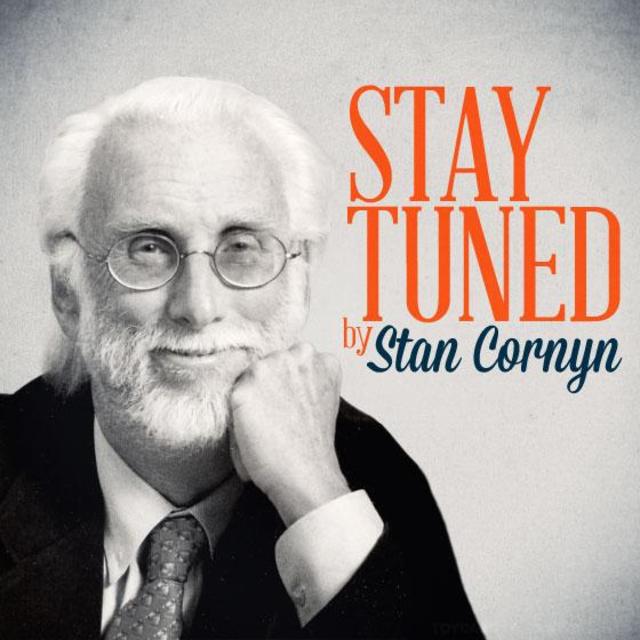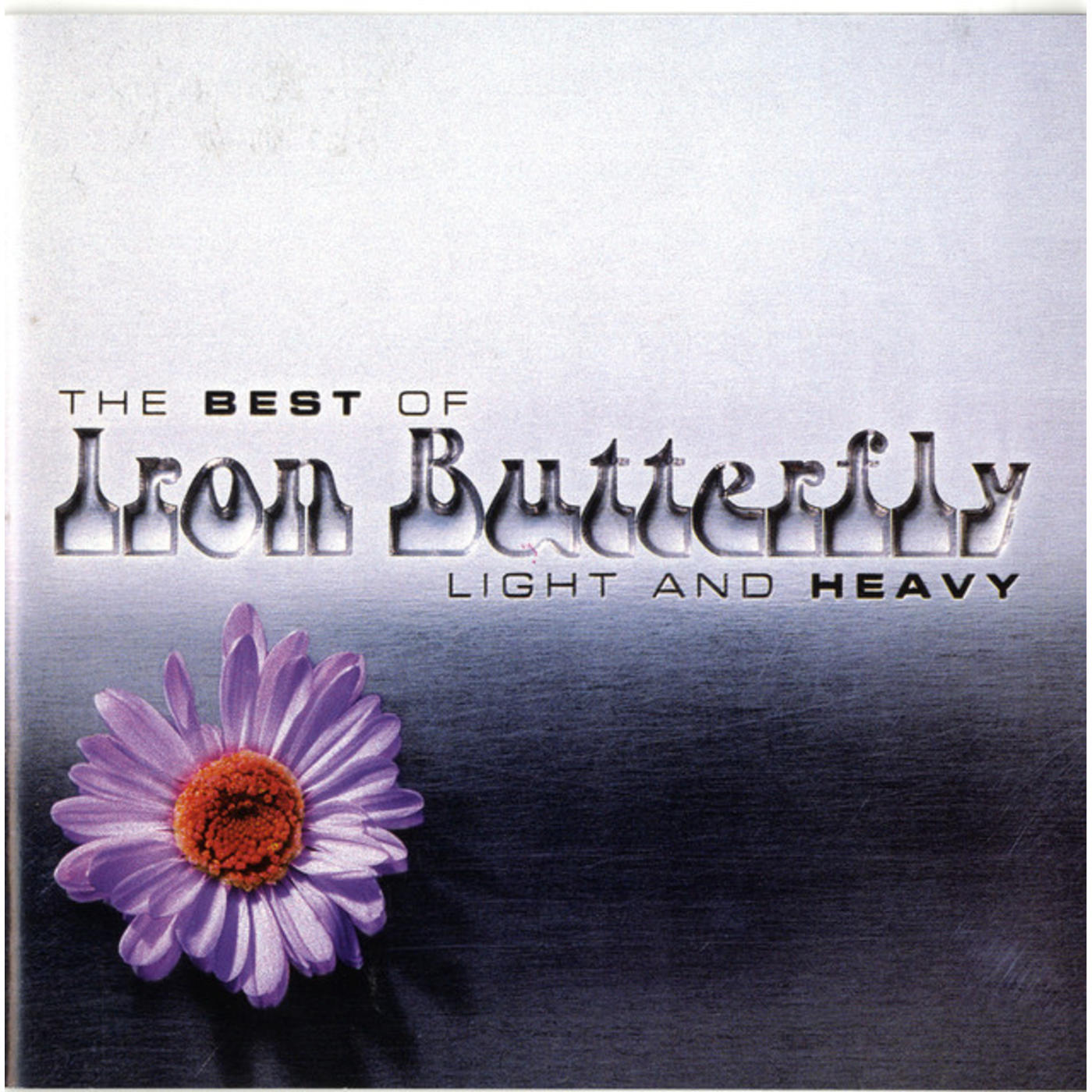Stay Tuned By Stan Cornyn: Atlantigada-da-Vida

Every Tuesday and Thursday, former Warner Bros. Records executive and industry insider Stan Cornyn ruminates on the past, present, and future of the music business.
1967
Atlantic Records (via its "not-really sub-label" ATCO) was again handling the “all other” categories of records in the late 1960s. All other in several cases now included young, psychedelic rock bands that obeyed no rules except tempo.
And this (let’s call this 1967) had just veered en route to another “big sound” city called Heavy Metal.
But for now, who knew what was really worth veering toward? Still, Atlantic wandered through the acid haze of cities from San Diego to Boston, hoping to hear their kinda hit.
Back in Manhattan, in the center of Atlantic, remained Aretha Franklin, appealing to the masses. In 1967, Aretha had single after single to swoon to: "Chain of Fools,""You Make Me Feel Like a Natural Woman,""Baby I Love You," embraced by hot albums like I Never Loved a Man the Way I Love You and Aretha Arrives.
By June of ’67, Atlantic had 18 singles in Billboard’s Hot 100, more than ever before. Upmost were #1 for Aretha’s "Respect," and a #2 for the Young Rascals "Groovin’".
Watch Aretha perform “Respect”:
Atop Atlantic, however, Ahmet Ertegun felt a clock ticking, ominously. Around him, “indy labels” like his were fading and failing. Vee-Jay had gone bankrupt. Chess Records had been sold for a third of its worth to some California label, which then scrapped it. Clearly, 1967 was not a good time to splurge on off-beat signings.
Ahmet also felt public taste moving away from soul music, moving to something white kids were into, something getting called “psychedelic rock.” And on Atlantic’s artist roster, psych rock was a hard to find. Buffalo Springfield? Maybe, and Cream out of England. And a couple of acts with dumb names that simply did not please Ahmet’s ears: Iron Butterfly and Vanilla Fudge.
Maybe, maybe not, but … here the story spins:
The Young Rascals
For Wexler and Ahmet, this “young” group had a soul approach to their first sides. In fact, they were known for their “blue-eyed soul.” Hits like “Good Lovin’,” “You Better Run,” “I’ve Been Lonely Too Long,” “A Girl Like You,” “How Can I Be Sure,” “Mustang Sally,” and especially “Groovin’.” Most of their hits had earlier been hits by other groups, like The Olympics. But not as blue-eyed.
Groovin' on a Sunday afternoon
Really couldn't get away too soon
I can't imagine anything that's better
The world is ours whenever we're together
There ain't a place I'd like to be instead of
Movin' down a crowded avenue
Doing anything we like to do
Still, around that “blue-eyed” also came on a r-r-roaring guitar rock, which edged those Rascals away from the Atlantic’s basic genre of “Southern soul.” The Rascals had unequaled influence on aspiring R&B-sounding white acts, like Vanilla Fudge.
Watch “Groovin on a Sunday Afternoon”:
(Vanilla Fudge had swooned over The Rascals’ swinging sound and floods of organ. The quartet, managed by the crime family Lucchese’s Phillip Basile, had signed with Atco, too. In 1967, Vanilla Fudge had a Top 6 hit with their version of The Supremes’ “You Keep Me Hanging On,” with driving drumming and psychedelic-baroque organ.)
Set me free, why don't cha, baby
Get out my life, why don't cha, baby
'Cause you don't really love me
You just keep me hangin' on
You don't really need me
But you keep me hangin' on
You don't really need me
But you keep me hangin' on
Back to The Rascals.
They wanted to be rid of the “Young” in their name. They no longer felt “Young,” and decided to drop that adjective. Led by Felix Cavaliere (now “their guru”), they’d fallen in with Swami Satchidananda in his Integral Yoga Institute. They felt it: The Summer of Love.
By 1968, The Rascals (now so-labeled) brought another viewpoint to the charts: Their “People Got to Be Free” pled for racial tolerance following the assassinations of Sen. Robert Kennedy and Rev. Martin Luther King. This single was their third to reach #1.
But without the “Young,” hits came less easily. The Rascals evolved, reorganized, and even ended up on Broadway, but for Ahmet, he’d not found a lasting group in the middle of pop.
Iron Butterfly
Out in California, an indy “search team” for Atlantic known as Greene and Stone (they’d signed up Sonny and Cher in ’65, then in ’66 The Buffalo Springfield, both to Atlantic) phoned New York. Told Ahmet they’d come across a new band that Neil Young had recommended.
Greene and Stone thus offered “another” from California. Named “Iron Butterfly.” (New bands wanting to be “in” named themselves after insects right then, to be like The Beatles.)
Greene and Stone had credibility, so the Butterfly landed in Atco’s net. For Stone, it was just the dollars business, not good music. He later confessed “Charlie and I went to see them and I thought they were shit, actually. Cacophonous. Out of tune. Awful. I called Ahmet and I said we had a new band and he saw them at the Purple Onion or some crazy place on the Sunset Strip and signed them.”
The Butterfly quartet was spaced out. Led by Doug Ingle, the foursome slept nights in a Hollywood “nightclub” called Bido Lito’s. Drug raids at a spot like this guaranteed weekly. Like The Doors, their “any gig will do” predecessors at Bido Lito’s, The Iron Butterfly pounded out five shows, each night, times six a week.
Recording on top of all these gigs proved a challenge. But Iron Butterfly was focused, and it soon became time for its second album (first album, 1967’s Heavy, had gone nowhere). No album title yet, but the Butterfly boys were grinding (right word) out their singles with their sound: hard-edged fuzz, organ-dominated, killer hooks and riffs.
One such single from the Heavy album, “Are You Happy,” demo’s the group’s mid-song switch into full/hard rock. Listen here:
The Sound Check Session
For one of the album’s sessions, the group waited for the album producer (Jim Hilton) to arrive. Lead vocalist and organ player Doug Ingle was a bit out of it. (He once estimated he’d felt that day like he’d had three days of no sleep plus one gallon of red wine.)
While waiting for Hilton, they did a sound check for the engineer. After the “single” version had been run through, the group kept playing on for more sound checking. They got into it. What followed was a relentless riff that grew larger and more physical as the organ, bass, and drums weaved together. After seven minutes, no break yet, next a drum solo. After that solo, the other Butterflys come back in, all of them in this piece, fighting as if for supremacy. In the control booth, the tape keeps rolling. Nasty guitar howls, minute after minute. At minute 15, back to the basis: back to the song itself, “In the Garden of Eden.”
The sound check went on for 17 minutes. On tape.
Amid all the hearsay about the song’s odd title, “In-A-Gadda-Da-Vida,” most versions agree on this much: Sometime during the sound check recording, Ingle, the song’s author and vocalist, drunk and/or high, slurred the words when naming the song over his mike over into the earphones of drummer Ron Bushy. Bushy, heard what he heard, and wrote down “In-A-Gadda-Da-Vida.” After the sound check’s long-jam, Bushy showed Ingle what he’d written down. That version stuck.
Once producer Jim Hilton arrived, he heard the 17:05 sound check. He and all agreed that this version was quite good enough. It became the entire B-side of the album.
Ahmet hadn’t wanted to put out the Iron Butterfly’s album because, as he put it, “the singles were all shit.” But college radio had already seized upon the album’s B-side two – that nearly 17:05 minute version of “In-A-Gadda-Da-Vida.”
Experience the full 17:05 here:
In a gadda da vida, honey
Don't you know that I'm lovin' you
In a gadda da vida, baby
Don't you know that I'll always be true
Oh, won't you come with me
And take my hand
Oh, won't you come with me
And walk this land
Please take my hand
What Sells, Sells
At Atlantic, orders for the album started climbing, rapidly. Ahmet called Greene and told him “This record is going crazy. You have to put this band on the road.”
“What band?” Charlie answered. “There is no band.”
Ahmet came back at him: “Go out and find the worst drummer in America because no one else is going to be able to duplicate it.”
In-A-Gadda-Da-Vida went to #2. And sold and sold.
Five weeks after the long album version came out, on July 21, 1968, Atlantic issued an edited-down version, which lived on the Billboard charts for 170 weeks.
FM stations had done their job. Audio cassettes, born in the 1960s, had become “it” for teens-on-high and spaced-out rock performances. The longer, the higher. 17:05 sounded ideal. Even now to Ahmet.
Atlantic had lucked out, and as of now: that sound check and shortened versions thereof eventually sold over 30 million copies.
Beyond those big numbers, Atlantic had signed one of the first groups to evolve psychedelic rock into heavy metal. Not intentionally, mind you, but Atlantic in 1967 was learning that its original intentions – a small label devoted to R&B – had to grow.
Atlantic learned to shift its gears, and headed out for more Iron. And gold.
And with all this, Aretha’s label could love her now “forever.”
- Stay Tuned

